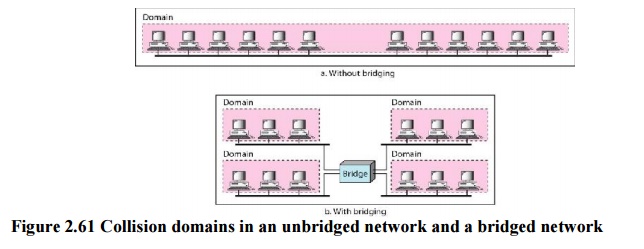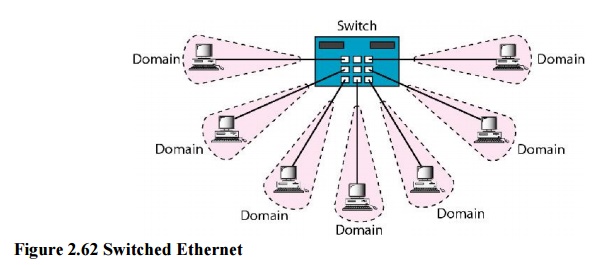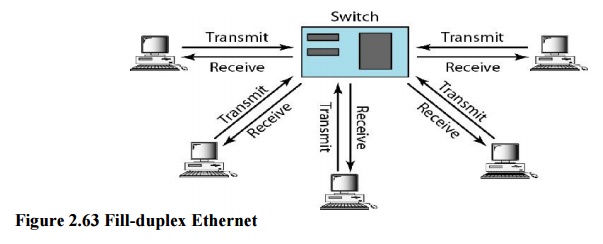Chapter: Computer Networks : Data Link Layer
Changes in the Standard
Changes In The Standard
The
10-Mbps Standard Ethernet has gone through several changes before moving to the
higher data rates. These changes actually opened the road to the evolution of
the Ethernet to become compatible with other high-data-rate LANs.
1. Bridged Ethernet
The first
step in the Ethernet evolution was the division of a LAN by bridges. Bridges
have two effects on an Ethernet LAN: They raise the bandwidth and they separate
collision domains.
Raising
the Bandwidth
In an
unbridged Ethernet network, the total capacity (10 Mbps) is shared among all
stations with a frame to send; the stations share the bandwidth of the network.
If only one station has frames to send, it benefits from the total capacity (10
Mbps). But if more than one station needs to use the network, the capacity is
shared. For example, if two stations have a lot of frames to send, they
probably alternate in usage. When one station is sending, the other one
refrains from sending.

A bridge
divides the network into two or more networks. Bandwidth-wise, each network is
independent. a network with 12 stations is divided into two networks, each with
6 stations. Now each network has a capacity of 10 Mbps. The 10-Mbps capacity in
each segment is now shared between 6 stations (actually 7 because the bridge
acts as a station in each segment), not 12 stations. In a network with a heavy
load, each station theoretically is offered 10/6 Mbps instead of 10/12 Mbps,
assuming that the traffic is not going through the bridge

Separating
Collision Domains
Another
advantage of a bridge is the separation of the collision domain. The collision
domain becomes much smaller and the probability of collision is reduced
tremendously. Without bridging, 12 stations contend for access to the medium;
with bridging only 3 stations contend for access to the medium

2. Switched Ethernet
The idea
of a bridged LAN can be extended to a switched LAN. Instead of having two to
four networks. The bandwidth is shared only between the station and the switch
(5 Mbps each). In addition, the collision domain is divided into N domains. A layer 2 switch is an N-port bridge with additional
sophistication that allows faster handling of the packets. Evolution from a
bridged Ethernet to a switched Ethernet was a big step that opened the way to
an even faster Ethernet.

3. Full-Duplex Ethernet
One of
the limitations of 10Base5 and l0Base2 is that communication is half-duplex, a
station can either send or receive, but may not do both at the same time. The
next step in the evolution was to move from switched Ethernet to full-duplex
switched Ethernet. The full-duplex mode increases the capacity of each domain
from 10 to 20 Mbps.

Related Topics